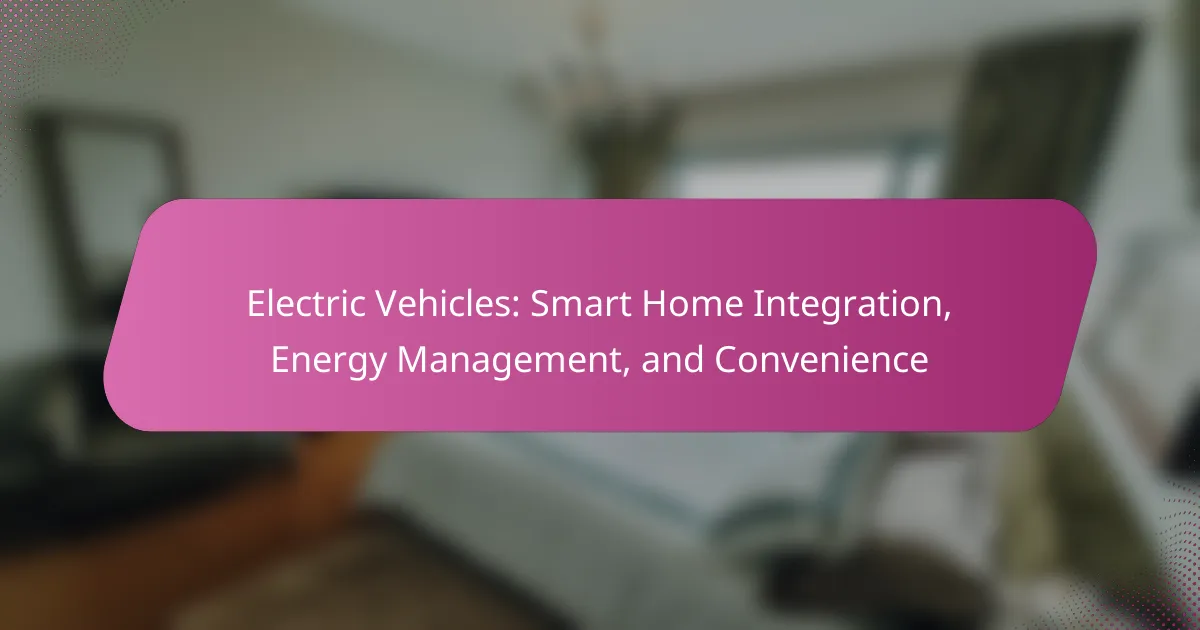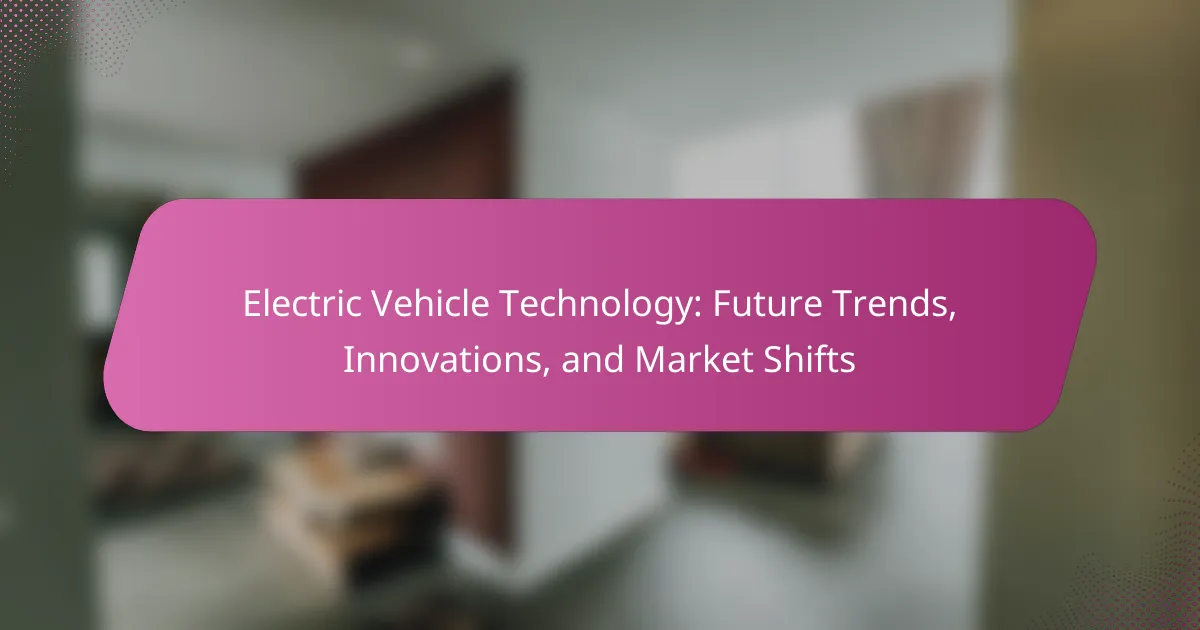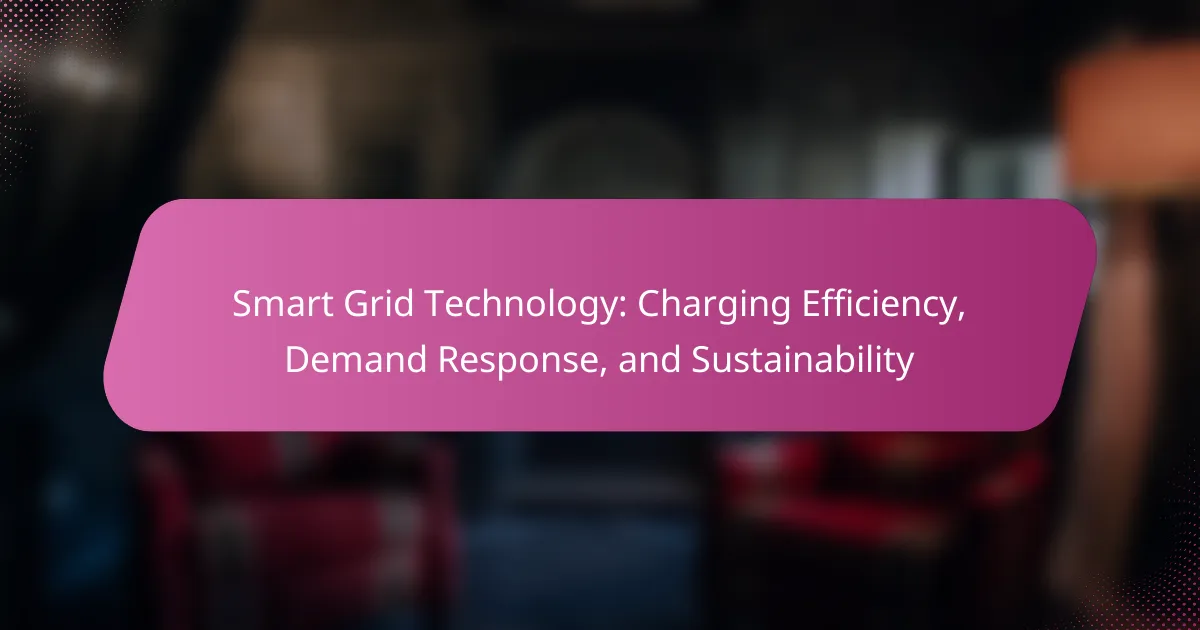Electric vehicles (EVs) are revolutionizing the way we manage energy and convenience in our homes through smart home integration. By connecting EVs with smart systems, users can efficiently control charging, monitor energy consumption, and automate household functions, leading to enhanced efficiency and cost savings. This synergy not only optimizes energy usage but also empowers homeowners to leverage renewable energy sources effectively.
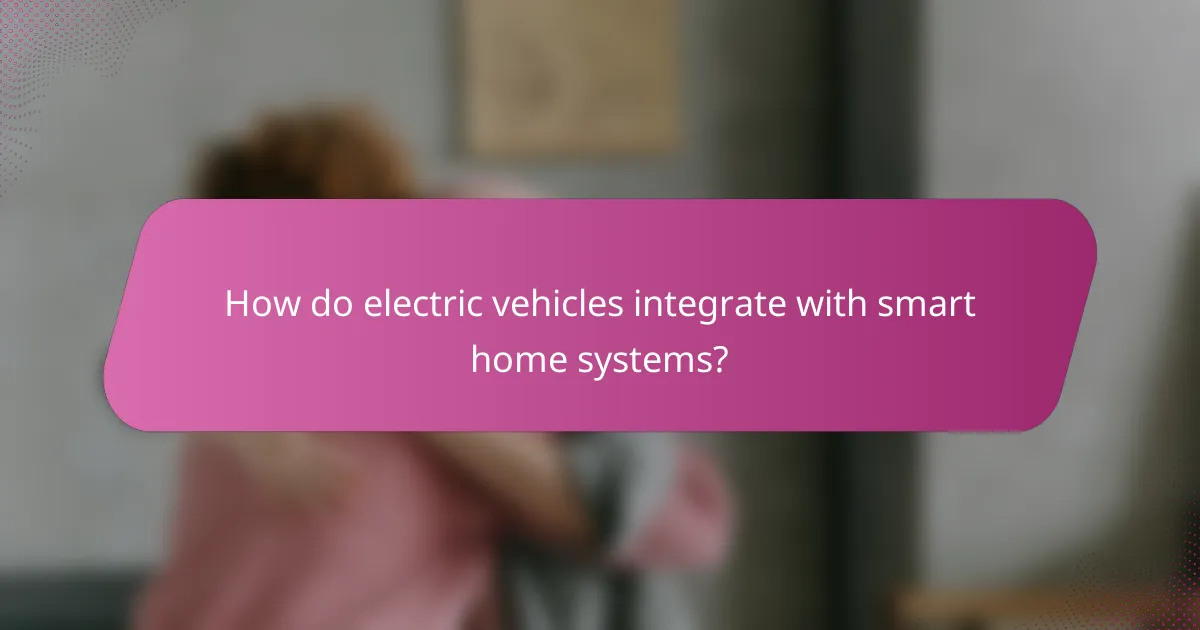
How do electric vehicles integrate with smart home systems?
Electric vehicles (EVs) can seamlessly integrate with smart home systems to enhance convenience and energy management. This integration allows users to control charging, monitor energy usage, and automate various functions through connected devices.
Compatibility with Amazon Alexa
Many electric vehicles are compatible with Amazon Alexa, enabling voice control for various functions. Users can check battery status, start or stop charging, and even locate their vehicle using simple voice commands. To set this up, ensure your EV’s app is linked to your Alexa account.
Common commands include asking Alexa about the vehicle’s charge level or instructing it to start charging at a specific time. This functionality adds convenience, especially for busy households.
Integration with Google Home
Electric vehicles can also integrate with Google Home, allowing users to manage their vehicles through Google Assistant. This setup enables voice-activated commands similar to those available with Alexa, such as checking the battery status or scheduling charging sessions.
To utilize this feature, link your EV’s app to Google Home and ensure your smart devices are connected to the same network. This integration enhances the smart home experience by providing hands-free control.
Smart charging stations
Smart charging stations are essential for optimizing the charging process of electric vehicles. These stations can be programmed to charge during off-peak hours, helping to reduce energy costs. Many models offer Wi-Fi connectivity, allowing users to monitor charging status remotely via smartphone apps.
When selecting a smart charging station, consider compatibility with your EV model and the charging speed it offers. Fast chargers can significantly reduce charging time, making them ideal for daily use.
Home energy management systems
Home energy management systems (HEMS) can integrate with electric vehicles to optimize energy consumption across the home. These systems monitor energy usage and can adjust the charging of the EV based on real-time electricity rates and household demand.
By using a HEMS, homeowners can ensure that their electric vehicle charges when energy prices are lowest, potentially saving money on electricity bills. Look for systems that offer compatibility with both your EV and other smart home devices for the best results.

What are the benefits of electric vehicle and smart home integration?
Integrating electric vehicles (EVs) with smart home systems offers numerous benefits, including improved energy management, enhanced convenience, and increased efficiency. This synergy allows homeowners to optimize energy usage and reduce costs while enjoying seamless control over their devices.
Enhanced energy efficiency
Smart home integration allows electric vehicles to communicate with home energy systems, optimizing energy consumption. For instance, EVs can charge during off-peak hours when electricity rates are lower, reducing overall energy costs.
Additionally, smart home devices can adjust energy usage based on the EV’s charging needs, ensuring that the home operates efficiently. This can lead to significant reductions in energy waste and a smaller carbon footprint.
Remote monitoring and control
With smart home integration, users can remotely monitor and control their electric vehicles through mobile apps. This capability allows for real-time updates on charging status, battery health, and energy consumption.
Remote control features enable users to schedule charging sessions, manage energy use, and even precondition the vehicle’s interior temperature before driving. This convenience enhances the overall user experience and ensures that the vehicle is always ready when needed.
Cost savings on energy bills
Integrating electric vehicles with smart home systems can lead to substantial cost savings on energy bills. By charging during off-peak hours and utilizing home solar energy, homeowners can significantly reduce their electricity expenses.
Moreover, some utility companies offer incentives for EV owners who participate in demand response programs, allowing users to earn credits by reducing energy consumption during peak times. This can further lower energy costs while promoting sustainable energy practices.
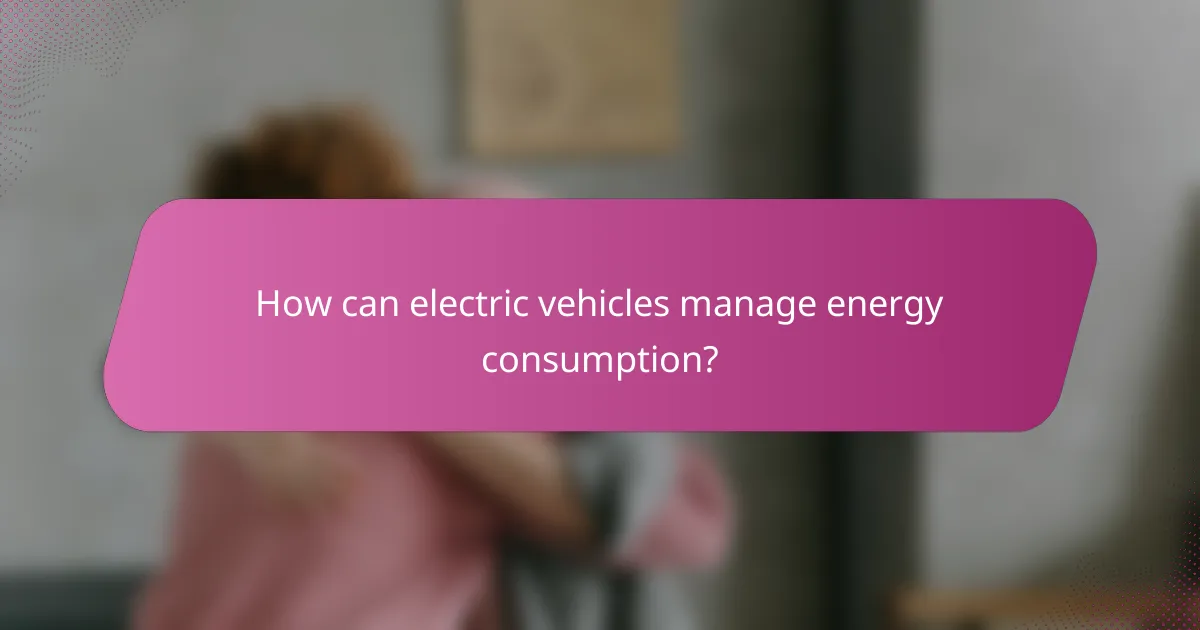
How can electric vehicles manage energy consumption?
Electric vehicles (EVs) can manage energy consumption through various methods that optimize energy use and reduce costs. By integrating with smart home systems, EVs can facilitate energy transfer, schedule charging during off-peak hours, and utilize renewable energy sources effectively.
Vehicle-to-home energy transfer
Vehicle-to-home (V2H) energy transfer allows EVs to supply stored energy back to a home, providing power during peak demand or outages. This system can help balance energy consumption and reduce electricity bills by utilizing the vehicle’s battery as a backup power source.
To implement V2H, homeowners need a compatible inverter and a smart energy management system. This setup can enable seamless energy flow between the vehicle and the home, ensuring efficient energy use.
Smart charging schedules
Smart charging schedules enable EV owners to charge their vehicles during off-peak hours when electricity rates are lower. Many utility companies offer time-of-use pricing, making it financially beneficial to charge at night or during specific hours.
Using a smart charging app, drivers can set schedules based on their daily routines and local electricity rates. This approach not only saves money but also helps reduce strain on the electrical grid during peak times.
Renewable energy utilization
Integrating renewable energy sources, such as solar panels, with EV charging can significantly enhance energy management. Homeowners can charge their vehicles using solar energy, reducing reliance on grid electricity and lowering overall energy costs.
To maximize renewable energy utilization, consider installing a home energy storage system that captures excess energy generated during the day. This stored energy can then be used to charge the EV at night, creating a sustainable and cost-effective energy cycle.

What are the best practices for energy management with electric vehicles?
Effective energy management with electric vehicles (EVs) involves strategies that optimize charging costs and reduce energy consumption. By leveraging time-of-use rates and optimizing charging times, EV owners can significantly enhance their energy efficiency and save on electricity bills.
Using time-of-use rates
Time-of-use (TOU) rates are pricing structures that vary electricity costs based on the time of day. Typically, electricity is cheaper during off-peak hours, such as late at night or early morning, making these times ideal for charging your EV.
To take advantage of TOU rates, check with your local utility provider for specific pricing schedules. By programming your EV to charge during these lower-cost periods, you can potentially save a substantial amount on your monthly energy bill.
Optimizing charging times
Optimizing charging times is crucial for maximizing energy efficiency. Most EVs allow you to set charging schedules, which can be aligned with TOU rates to ensure you are charging when electricity is cheapest.
Consider using smart home technology to automate your charging. For example, if your utility offers a mobile app, you can receive alerts about the best times to charge based on current rates. Additionally, be mindful of your driving habits; charging after a long trip may be more beneficial than charging frequently for short distances.

What are the leading electric vehicle brands for smart home integration?
The leading electric vehicle brands for smart home integration include Tesla and Ford, which offer advanced features that allow seamless connectivity between vehicles and home automation systems. These integrations enhance energy management and convenience for users, making it easier to control charging and monitor energy consumption.
Tesla Model 3
The Tesla Model 3 is renowned for its robust smart home integration capabilities, primarily through the Tesla app. Owners can remotely monitor battery levels, schedule charging times, and even precondition the cabin temperature before driving, all from their smartphones.
Additionally, the Model 3 supports integration with various smart home devices, such as smart thermostats and lighting systems. This allows users to create automated routines, like adjusting home energy use based on the vehicle’s charging status, optimizing both convenience and energy savings.
Ford Mustang Mach-E
The Ford Mustang Mach-E features Ford’s intelligent connected technology, which enables users to manage their vehicle and home systems efficiently. Through the FordPass app, drivers can check battery status, locate charging stations, and set charging schedules to take advantage of off-peak electricity rates.
Moreover, the Mach-E can integrate with smart home devices via platforms like Amazon Alexa. This allows for voice-activated commands to control home appliances, enhancing the overall user experience and making energy management more intuitive.
